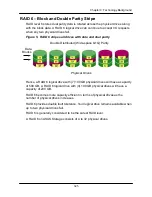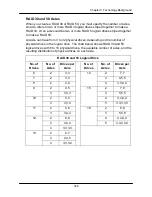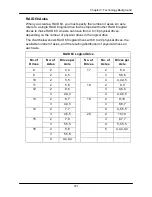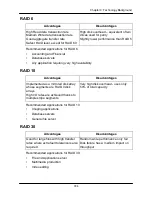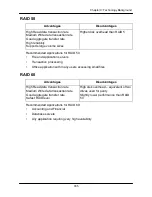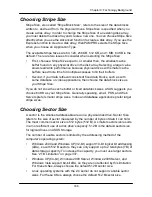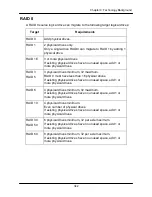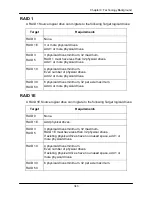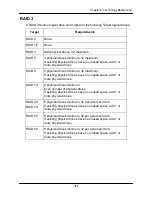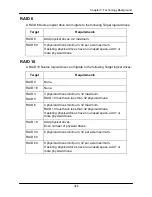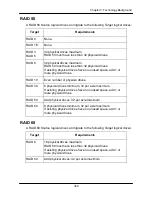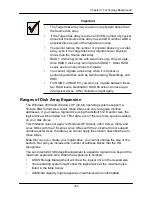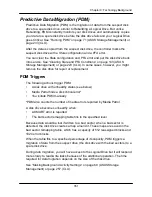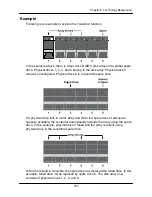
339
Chapter 9: Technology Background
battery will power the cache,
see ―Checking the Battery‖ on page 138 or
page 219.
The Adaptive Writeback Cache feature protects your data by changing the write
cache settings while the cache backup battery is offline. When all of the following
conditions occur:
•
The logical drive write policy is set to Write Back
•
The Adaptive Writeback Cache feature is enabled
•
The cache backup battery goes offline
The write policy automatically changes to
Write Thru
. When the battery comes
back online, the write policy automatically changes back to
Write Back
.
To enable the Adaptive Writeback Cache option, see
―Making Controller Settings‖
on page 132 (ASUS Storage Management) or page 213 (CLU).
Also see ―Replacing the Cache Battery‖ on page 314.
Capacity Coercion
This feature is designed for fault-tolerant logical drives (RAID 1, 1E, 5, 10, 50,
and 60). It is generally recommended to use physical drives of the same size in
your disk arrays. When this is not possible, physical drives of different sizes will
work but the system must adjust for the size differences by reducing or coercing
the capacity of the larger drives to match the smaller ones. With ASUS Storage,
you can choose to enable Capacity Coercion and any one of four methods.
Enable Capacity Coercion and choose the Method in the Controller Settings
menu. See page 132 (ASUS Storage Management) or page 213 (CLU). The
choices are:
•
GB Truncate
– (Default) Reduces the useful capacity to the nearest
1,000,000,000 byte boundary.
•
10GB Truncate
– Reduces the useful capacity to the nearest
10,000,000,000 byte boundary.
•
Group Rounding
– Uses an algorithm to determine how much to truncate.
Results in the maximum amount of usable drive capacity.
•
Table Rounding
– Applies a predefined table to determine how much to
truncate.
Capacity Coercion also affects a replacement drive used in a disk array.
Normally, when an physical drive fails, the replacement drive must be the same
capacity or larger. However, the Capacity Coercion feature permits the
installation of a replacement drive that is slightly smaller (within 1 gigabyte) than
the remaining working drive. For example, the remaining working drives can be
Summary of Contents for DS300f
Page 1: ...ASUS Storage DS300f DS300i User Manual Version 1 0 ...
Page 10: ...x Language 178 Closing Smart NAS Console 178 ...
Page 27: ...8 Chapter 1 Introduction to ASUS Storage ...
Page 57: ...3 8 Chapter 2 ASUS Storage Installation ...
Page 73: ...54 Chapter 3 ASUS Storage Setup ...
Page 164: ...14 5 Chapter 4 Management with ASUS Storage Management ...
Page 221: ...202 Chapter 5 SmartNAVI ...
Page 235: ...216 Chapter 6 Management with the CLU Figure 4 Controller Status LED Controller Status ...
Page 337: ...318 Chapter 8 Maintenance ...
Page 425: ...406 Chapter 11 Support ...
Page 433: ...414 Appendix A Setting up NAS Network Drives ...
Page 449: ...430 Index ...

